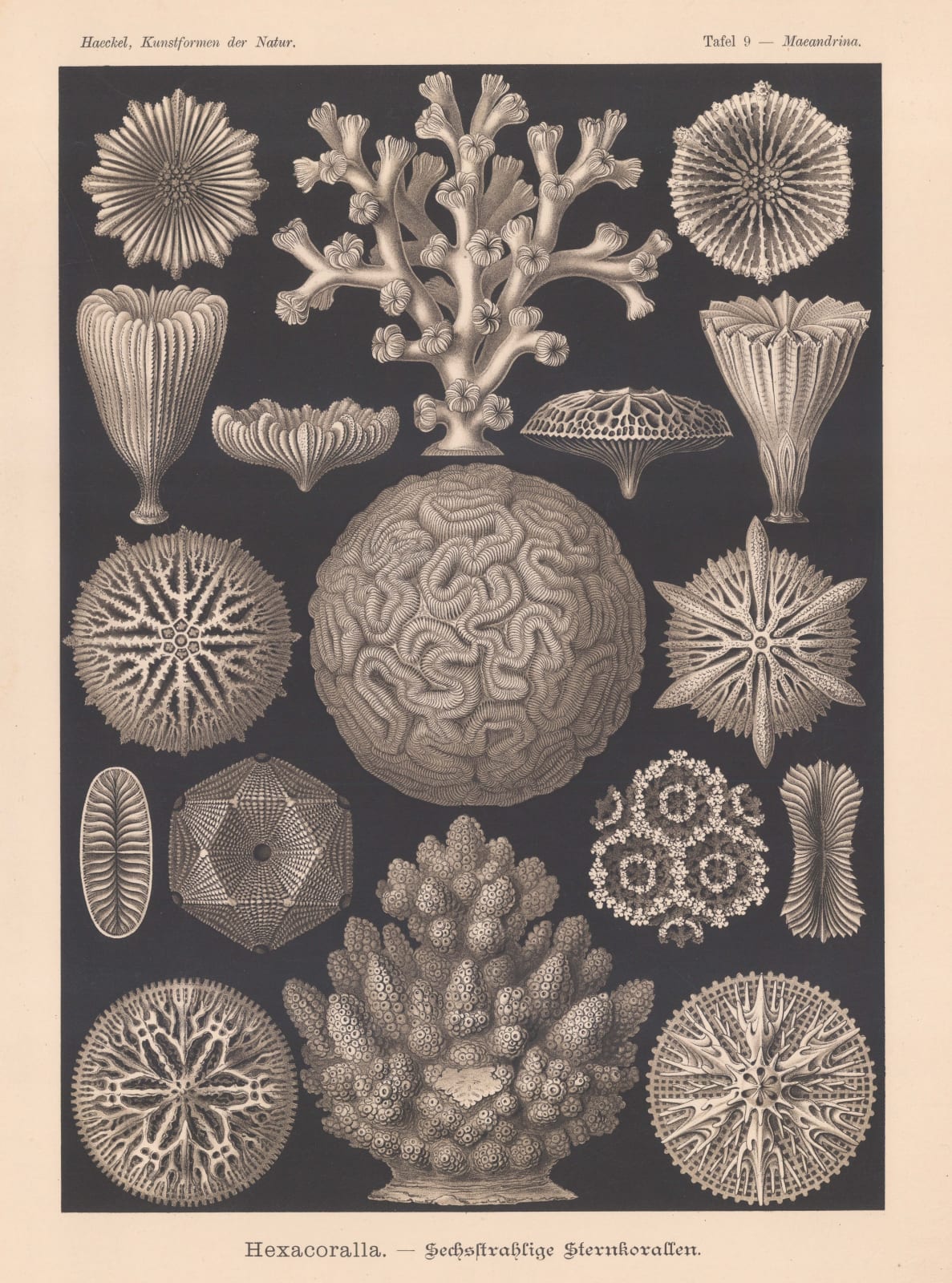Ernst Haeckel
27.9 x 20.3 cm
Ernst Haeckel, scientist, philosopher and artist, made a significant contribution to early evolutionary theory and was profoundly influential on the Fine and Decorative Arts of his time. Initially Haeckel trained as a physician and then studied comparative anatomy with an emphasis on sea organisms and embryology. His first study of sea life Die Radiolarien was received with great acclaim, particularly by Charles Darwin, and he was subsequently offered a professorship in zoology. In 1868 Haeckel published Natürliche Schopfungsgeschichte (The Natural History of Creation) asserting the central thesis of Darwin’s Origin of Species but in language more accessible to a wider audience and arguably more influential then Darwin’s rather technical Origin. Although he would become one of the greatest disseminators of Darwinism, he argued that the origin of humans lay in Asia from the mythical lost continent of Lemuria and speculated that ‘missing links’ would be found to connect apes with humans decades before Eugene Dubois’s 'Java man'. He was commissioned to undertake the identification and illustration of the HMS Challenger expedition in 1876, the first such scientific survey of the oceans, ultimately establishing oceanography as a science and would name thousands of new species, establishing terms such as stem cell, ecology (oecologia) and phylum. However it is through Kunstformen der Nature (Art Forms of Nature), published in sets of ten between 1899 and 1904, and as a complete volume in 1904, that he is best known.
Haeckel’s expertly drafted sketches of meticulously organised, stylized sea life translated into lithographs by Adolf Gilitsch, would be reinterpreted by all areas of the fine and decorative arts to inform the style of the Art Noveau and inspire some of the great artists, designers and decorators of the Belle Epoque such as Rene Binet, Antoni Gaudi, Gustav Klimt, Louis Comfort Tiffany and Charles Worth. Kunstformen gave insight into a world largely unknown, emphasising its symmetries and patterns to express the science in art, the art in science and the connectivity of all living things. Ultimately our modern view of life has its foundations in Haeckel’s understanding of the natural world and his holistic approach continues to be the framework adopted by emerging scientific fields whilst his extraordinary illustrations have never ceased to enliven all areas of the arts.
Join our mailing list
* denotes required fields
We will process the personal data you have supplied to communicate with you in accordance with our Privacy Policy. You can unsubscribe or change your preferences at any time by clicking the link in our emails.


